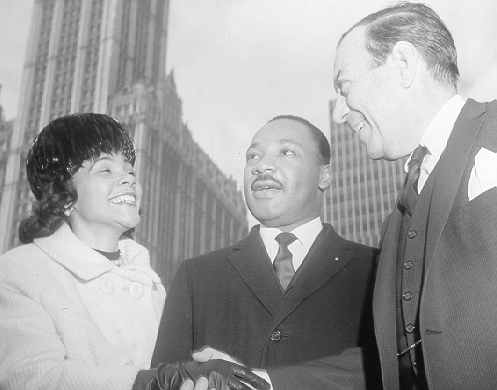Steven A. Levine
Coordinator for Educational Programs
As we approached the 50th anniversary of the assassination of President John F. Kennedy, I recalled that Lee Harvey Oswald lived in the Bronx and had a tangential connection to Mayor Robert F. Wagner through John Carro, one of Wagner’s assistants in the 1960s.
In 1953 Carro was a probation officer for the Children’s Court. Ten years later just after Lee Harvey Oswald had been murdered by Jack Ruby, a friend of his called, “Carro, you know who that case is . . .?" That was the case you handled. Don't you remember?" Carro had been the probation officer for a 12 year old truant from New Orleans named Lee Harvey Oswald, then living in the Bronx on the Grand Concourse, who had missed 46 days of school in the fall 1952 semester. He recalled in his testimony to the Warren Commission
“I went upstairs and I told the press secretary to the mayor. I told him the information that had just been relayed to me that I had been Oswald's P.O. and that I should tell the mayor about it, and the mayor had gone to Washington, so he told me, "Just sit tight and don't say anything." The story didn't break in the papers - this was on a Tuesday or Wednesday - until Saturday when someone found out, went to Judge Kelley, and then there were stories Friday, Saturday, and the Post reporter showed up to my house on a Sunday evening. I don't know how he found out where I lived or anything else, but once he got there, I called city hall again, "Look, I got this reporter over here. What do I do with him?" They said, "So apparently the story has broken. So talk to him." . . .
Carro remembered Oswald because he was different from his other cases,
What did stand out, you know, that I really recall as a recollection of my own . . . that I was a Catholic probation officer and this boy was a Lutheran, which was strange to begin with, because you normally carry youth of your own background. And secondly that he did dress in a western style with the levis, and he spoke with this southwestern accent which made him different from the average boy that I had on probation.
But he concluded that the roots of Oswald’s crime could not be found in his youthful truancy or what he saw of Oswald and his family.
I wouldn't speculate on what drove Oswald to do this. I would say in my experience I have encountered many a boy who will do things like this to attract attention to themselves, that they exist, and they want somebody to care for them. It is hard to say what motivated him. I don't really know. I had no inkling of that at that stage. As a matter of fact, he said when he grew up he wanted to go into the Service, just like his brothers, who were in the Service, and he said he liked to horseback ride; he used to collect stamps. But certainly these things that he said were the normal kind of outlet, the things any normal boy of 13 years of age would do. There was nothing that would lead me to believe when I saw him at the age of 12 that there would be seeds of destruction for somebody. I couldn't in all honesty sincerely say such a thing.
Nonetheless, in a speech he gave to the Bronx County Society for Mental Health on January 27, 1964, he regretted that Oswald’s mother had refused to comply with a court order for her son to be treated at a psychiatric clinic. “Had he been placed, had he not been taken from our jurisdiction, his whole life may have been changed.” No doubt he was also thinking of the life of the nation as well.
You can read more about Carro’s impressions of Oswald in his Probation Officer’s Report and an interview with him available on You Tube Carro is one of the only people alive today who has any recollections of Oswald as a child. An important figure in Wagner’s third term, Carro had a distinguished career as a fighter for Puerto Rican and civil rights and was the first Puerto Rican appointed to the New York State Appellate Court.










